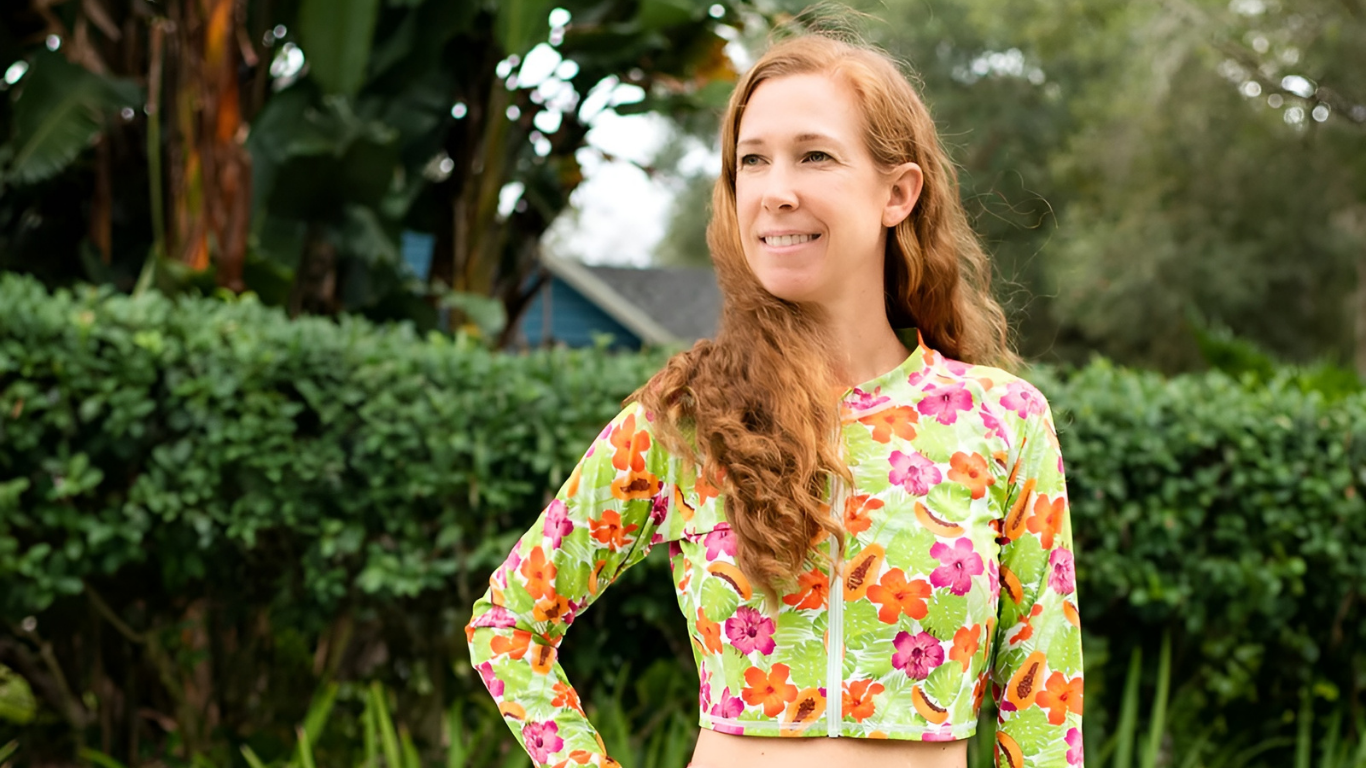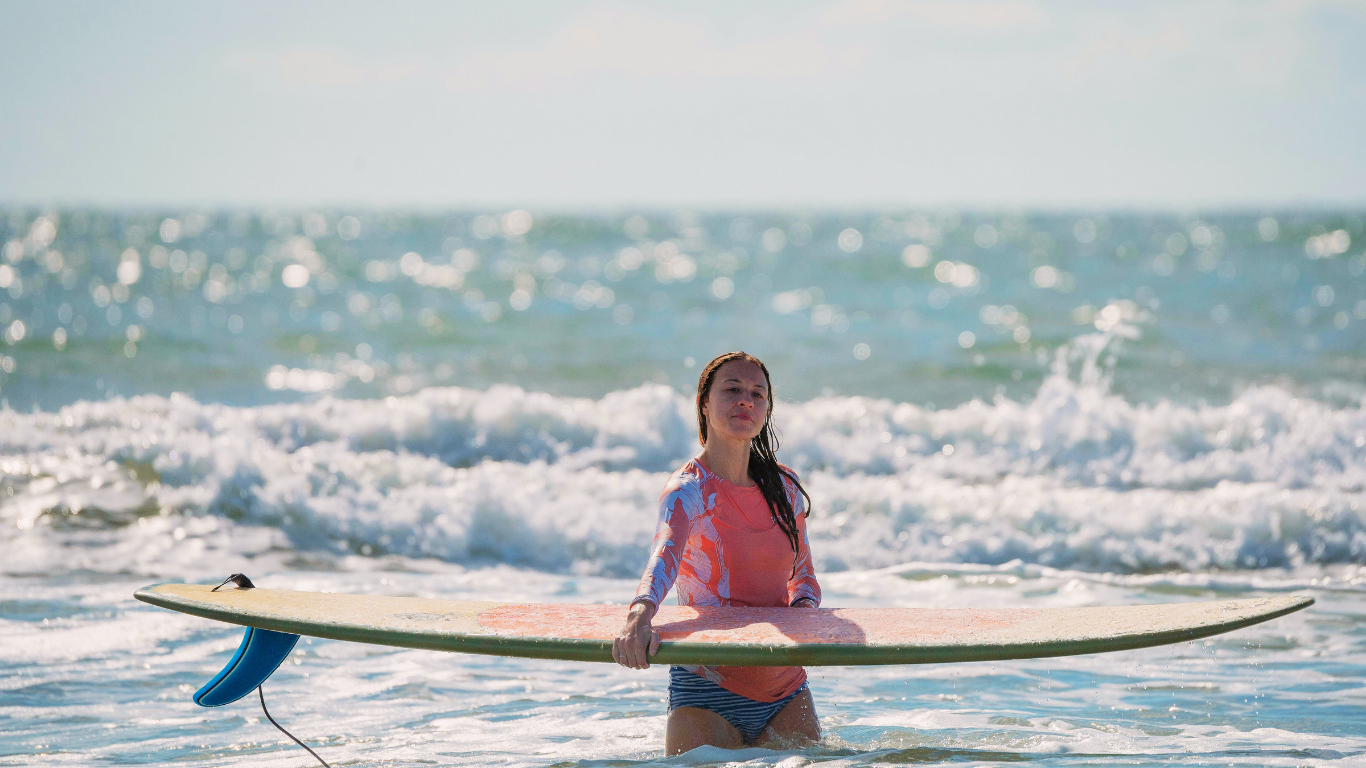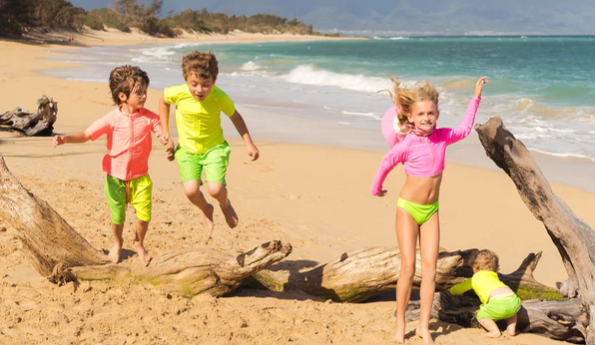
What color swimsuit is best for diving?
Whether you’re scuba diving, freediving, or snorkeling, certain swimsuit colors protect you by keeping you seen. The best swimsuit colors for visibility when diving are neon yellow, bright pink, neon orange, and neon green.
We’ll talk about the science of underwater visibility, the factors that affect light conditions, the best swimsuit color for diving in different water types, and what swimsuit colors to avoid. Let's dive into the science and strategy behind safe diving colors.
Why you want to be seen while diving
The right swimsuit color can save your life. Here's why you need to be seen while diving:
- Buddy safety and communication: Your diving buddy needs to track your location. In scuba diving and freediving, buddies watch each other for signs of distress, equipment problems, or emergencies.
- Boat traffic awareness: Safe diving colors help boat captains spot you on the surface.
- Emergencies: If something goes wrong underwater, your dive buddy or divemaster should be able to locate you quickly.
- Current and drift diving: In drift diving situations, staying visible to your partner and dive boat is a lot easier with the right swimsuit color.
- Low visibility conditions: Murky water, algae blooms, and poor weather reduce underwater visibility for everyone. A bright swimsuit is easier to spot in poor visibility.
The science of underwater visibility
Sunlight contains the entire color spectrum, but objects only reflect the colors that shine on them. A red swimsuit looks red at the surface because red light hits it and bounces back to your eyes. But water absorbs light at different rates, which causes colors to fade as depth increases. 30 feet down, there's no red light left to reflect. That same red suit now looks brown, gray, or black.
Water absorbs colors in a consistent order:
- Red light disappears first at 15 feet deep.
- Orange vanishes next, usually by 25 feet.
- Yellow light travels deeper before fading.
- Blue and green light have the most energy, so they penetrate the deepest.
Deep ocean water looks blue because all other colors have been absorbed.
Fluorescent colors work differently. They absorb invisible UV light and convert it into visible light. This makes fluorescent yellow, pink, and green appear to "glow" underwater, giving them superior underwater visibility than regular colors.
Other underwater visibility factors
Light physics isn’t the only factor that affects underwater perception and visibility:
- Water clarity: Crystal-clear tropical waters let colors shine through for maximum distance. Murky rivers, algae-rich lakes, or sediment-heavy waters reduce visibility.
- Lighting conditions: Bright sunny days provide maximum light penetration for the best color visibility. Overcast skies create gray, low-light conditions that reduce the color spectrum. Early morning and late afternoon diving, when the sun is low, reduces how well any color performs underwater.
- Seasonal changes: Spring snowmelt makes many bodies of water murky. Summer algae blooms can turn the water green and reduce visibility. Fall leaf debris affects some lakes. Winter conditions often reduce surface light.
- Horizontal distance: Even at shallow depths, distance affects color perception. A bright swimsuit might look great up close, but fade into the background when viewed from 30 feet away. The horizontal distance effect compounds with depth.
Your safety might depend on choosing colors that work with underwater light physics and your local water conditions.
Neon yellow: Best overall visibility
Neon yellow is the best overall choice for diving visibility across most water conditions. This fluorescent color creates maximum contrast against blue ocean water and maintains excellent visibility in challenging conditions.
- Best water conditions: Blue ocean water, clear tropical waters, overcast conditions
- Less effective conditions: Deep green algae-rich water (but still outperforms most colors)
Yellow is opposite blue on the color wheel, creating maximum visual contrast in oceans. Neon quality helps it stand out even when natural light starts to fade with depth.
🌊 SwimZip ocean-ready gear: Equip your family with our Men's Yellow Long Sleeve Rash Guard, Women's Yellow Long-Sleeve Rash Guard, and Kids' Neon Yellow Long-Sleeve Zipper Rash Guard for maximum diving visibility.
Bright pink: Best for clear and greenish water
Bright pink or hot pink creates the strongest visual pop against soft blue-green underwater backgrounds. Pink reflects a lot of light and maintains its punch at moderate diving depths. Try it for snorkeling and recreational diving.
- Best water conditions: Clear tropical waters, blue ocean water, crystal-clear high-altitude lakes
- Less effective conditions: Reddish-tinted water (sunrise and sunset conditions)
Pink sits opposite green on the color wheel, creating a natural contrast that makes swimmers recognizable in natural water environments. This color also has reflective properties that help it stay visible from a distance. Try this for buddy diving and drift diving.
🐬 SwimZip’s clear water styles: Get the whole family ready with our Men's “Impressions” Swim Trunks, Women's Neon Pink Copped Long-Sleeve Rash Guard, and Kids' Neon Pink UPF 50+ Long Sleeve Zipper Rash Guard for coordinated family diving.
Neon orange: Best for challenging conditions
Neon orange maintains visibility in the most challenging diving conditions, particularly green water environments and low-light (grey water) situations. That’s why it is the color of choice for water rescue teams.
- Best water conditions: Green algae-rich lakes, murky brown water, gray overcast conditions
- Less effective conditions: Deep ocean diving (though still visible longer than most colors)
Orange creates the strongest contrast against moderate blue tones because they're color wheel opposites. In freshwater diving, where algae and vegetation create green-tinted water, orange creates a strong contrast. This warm color also creates moderate contrast in brown, sediment-heavy water.
👙 SwimZip adventure gear: Outfit your crew with our Women's "Zinnia" Scoop-Neck Bikini, Girls' Ruffle Neon Orange One-Piece Swimsuit, and Boys Neon Orange Euro Shorties for good visibility on bad days.
Neon green: Best runner-up
Neon green or lime green offers decent underwater visibility in most diving conditions. This fluorescent color maintains contrast in blue ocean water and brown freshwater environments.
- Best water conditions: Pool water, shallow ocean water, clear lakes
- Less effective conditions: Heavy algae growth areas (blends with vegetation)
Fluorescent green contrasts with purple on the color wheel, so it doesn’t directly contrast with water. But since green light is absorbed deeper than most other colors, bright hues remain visible and create contrast at deeper depths. Try neon green for pool diving training, shallow water activities, and deep diving in clear conditions.
👪 Versatile visibility: Outfit your family in green with our neon collection for all-around visibility in water and on land.
Other high-visibility diving colors
You don’t have to stick to four colors if you want to be safe. Several additional colors provide good underwater visibility for specific diving conditions:
- Fluorescent whitemremains visible in sediment-heavy brown water conditions where light penetration is limited.
- Electric blue contrasts with green water.
- Safety red is quite visible in shallow water and on the surface, though it fades quickly with depth.
👀 Explore our high-visibility swimwear collection for scientifically selected colors that improve water safety.
Colors to avoid while diving
Some colors can make you nearly invisible underwater, creating dangerous situations for divers. These colors blend into the environment instead of standing out:
- Navy blue and dark blue blend with pools and oceans.
- Black absorbs light instead of reflecting it. Diving safety colors should reflect light to observers.
- Dark green blends with underwater vegetation, algae, and the natural green tints in many bodies of water.
- Brown and tan match sediment, sandy bottoms, and murky water conditions.
- Gray disappears in most underwater conditions. It matches overcast lighting, murky water, and rocky bottoms.
- Camouflage patterns hide you, which is dangerous for most diving activities.
See our swimsuit color safety chart for a visual breakdown of swimsuit color performance.
SwimZip's high-visibility diving collection
Stay safe and visible with SwimZip's high-visibility swimwear featuring UPF 50+ sun protection and the Skin Cancer Foundation seal of recommendation. Our fluorescent dyes create maximum underwater visibility while blocking 98% of harmful UV rays during surface intervals and boat rides.
Browse our neon collection and high-visibility swimwear for the brightest, safest colors that resist chlorine, salt water, and sun damage. Family matching sets let everyone coordinate bright colors for group diving adventures.
Want to learn more about choosing the safest swimsuit colors? Read our guide on swimsuit color visibility for water safety tips that go beyond diving.
Swimsuit colors for diving FAQ
What colors should I avoid in the ocean for sharks?
Bright colors don't attract sharks more than other colors. This is a common myth. Shark safe swimsuit colors are based more on contrast than specific hues. Sharks see contrast more than specific colors. High-contrast patterns (like black and white stripes) might create more visual interest, but solid bright colors don't increase shark attraction. Your diving behavior and splashing attract more than swimsuit color.
Do bright colors attract marine life while diving?
Swimsuit colors don't significantly affect animal interest. Most marine animals see colors differently from humans. Fish are more attracted to movement, vibration, and food sources than swimsuit colors. Bright colors help humans spot you without creating marine life problems. Some fish show curiosity regardless of color.
What's the most visible swimsuit color at 30 feet deep?
Use yellow or green swimwear for deep diving visibility. Red light has mostly disappeared by this depth, making red swimsuits appear brown or black. Yellow maintains visibility at 30 feet, while green also performs well. Fluorescent versions of these colors work even better because they reflect available light more efficiently.
Should freediving swimsuits be different colors from scuba gear?
Freedivers and scuba divers can wear the same high-visibility colors. Coordinate diving buddy colors for easy identification: if one person wears neon yellow, the other should choose bright orange or hot pink. This contrast makes it easier to spot each other underwater and helps surface support track both divers.
Do polarized goggles or masks affect how I see swimsuit colors underwater?
Polarized lenses reduce glare but don't significantly change underwater color perception. They filter reflected light from the surface, which can help you see colors more clearly underwater. The natural light absorption of water has a bigger impact on how colors appear than polarized lenses. Your swimsuit color choice should be based on natural underwater conditions.
Further reading
What is the best color swimsuit to wear in the lake?
What color is least visible under water?
What is high-visibility swimwear?
How to keep your kids safe during summer vacation?
Sun safe swimwear family ideas?
Resources
Visible Light. (2023, August 4). NASA Science. Retrieved September 22, 2025, from https://science.nasa.gov/ems/09_visiblelight/
Inouye, B. (n.d.). Light in the Ocean | manoa.hawaii.edu/ExploringOurFluidEarth. University of Hawaii at Manoa. Retrieved September 22, 2025, from https://manoa.hawaii.edu/exploringourfluidearth/physical/ocean-depths/light-ocean







Leave a comment
This site is protected by hCaptcha and the hCaptcha Privacy Policy and Terms of Service apply.